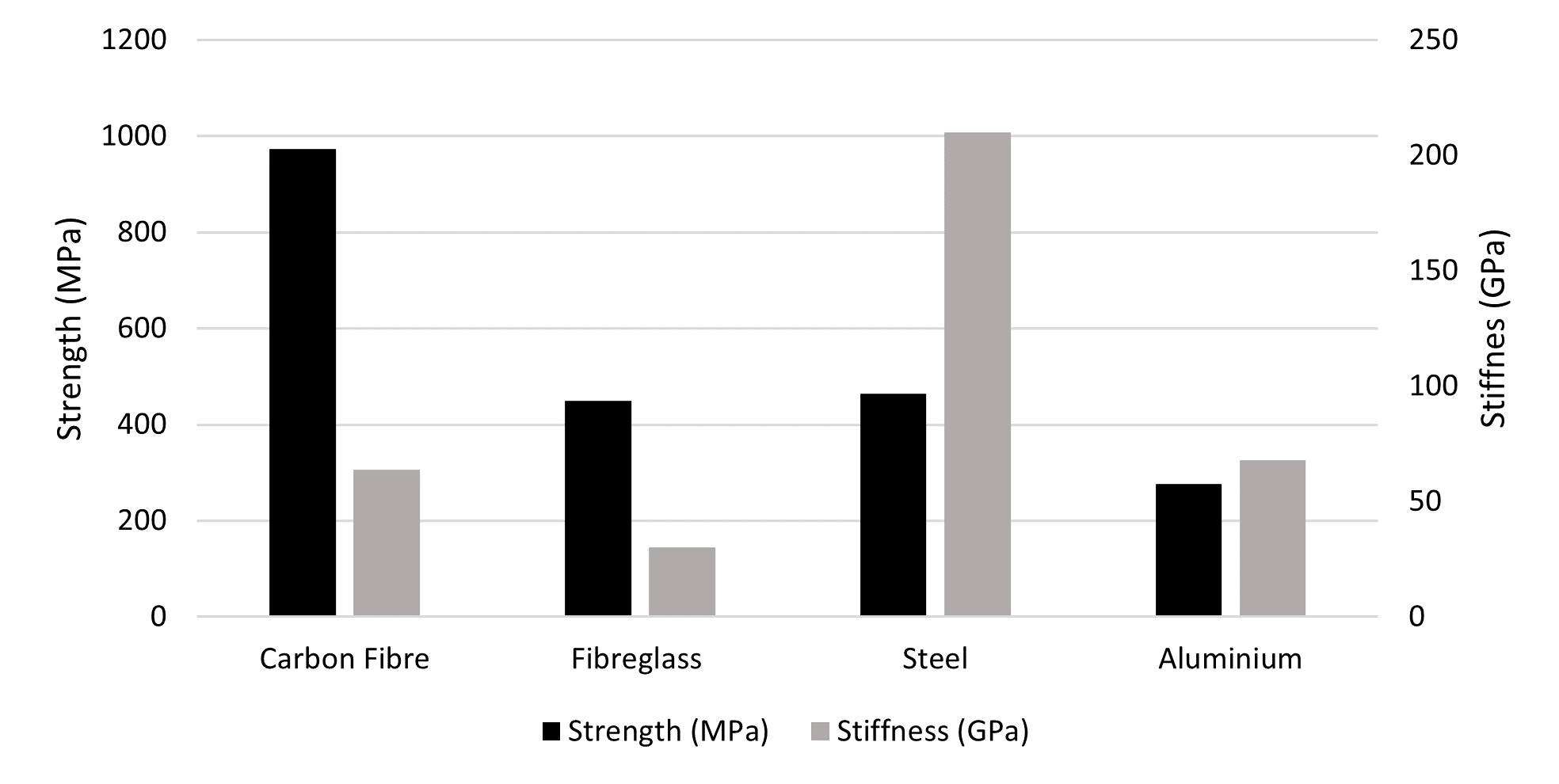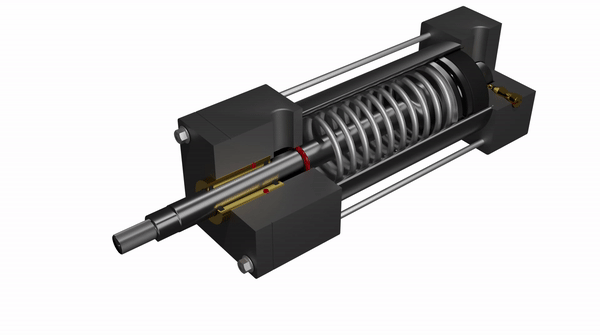Letters from the Lab #001
As my long-suffering friends and family know, I’m a big fan of bridges. I’ve commandeered many a holiday to visit some of the great bridges of the world. Last summer I forced a detour into a trip to see the famous Iron Bridge that crosses the
About the Author

Figure 1 – Iron Bridge that crosses the River Severn in Shropshire, England. Opened in 1781, made from cast iron.
Originally from Australia, Michael moved to the UK in 2012 to undertake a PhD at the Bristol Composites Institute. Michael’s research explored composite artificial muscle technology and spanned the interface between structural design and materials science. Following his PhD Michael co-founded Actuation Lab to drive the adoption of this advanced technology outside of academia. In this regular blog Michael and the team will be sharing some engineering thoughts, and providing insight into the philosophy that guides the company’s R&D efforts. Be sure to follow Actuation Lab for updates on the next instalment.
What can a 240-year-old metal bridge tell us about how to make actuators from advanced composite materials?
As my long-suffering friends and family know, I’m a big fan of bridges. I’ve commandeered many a holiday to visit some of the great bridges of the world. Last summer I forced a detour into a trip to see the famous Iron Bridge that crosses the River Severn in Shropshire, England. Opened in 1781, it was the first major bridge in the world to be made of cast iron. Musing over the bridge’s intricate structure got me thinking about how the bridge engineers throughout the ages have had to rethink their design practices to unlock the potential of new materials. Here lies the purpose of this first blog post. I’m passionate about efficient design and using new materials to their full potential. I want to discuss some areas where this is done well, some not so well, and how at Actuation Lab we are channelling our inner 18th-century bridge engineer to build the world’s most efficient industrial automation equipment.
Unlike other engineered creations, the long history of bridge construction, combined with their size and prominence can make the important relationship between material properties and structural design (its shape or form) clear to observe. For example, the structure of an ancient block stone arch bridge is very different to modern steel cable suspension bridges. Part of the reason behind this varied structure is to load the materials they are constructed from in such a way to best make use of their inherent mechanical properties. In the case of Iron Bridge that I visited this year, it has a structure that places the material in compression (pushing or squeezing) to avoid the relatively poor tensile (pulling or stretching) strength of the cast iron it is made from. As material science improved the properties of iron-based metals, we could have continued to build bridges with structures like Iron Bridge, but the improved tensile strength of steel allowed us to change the design to those that use less material and are more economical to construct.

Figure 2 – (left) The stone block Pons Fabricius bridge, Italy, built 62 BC, (right) and the Akashi Kaikyo steel suspension bridge, Japan, completed in 1998, which currently has the longest central span of any bridge in the world.
Optimising your structural design to match the properties of the material you want to use might seem like an obvious engineering principle, but it’s not always followed so closely. This is particularly true when people try to update a product to make use of the latest polymer-based engineering materials in order to reduce product weight or improve longevity in harsh environments. Commercial aircraft are one such example. If you compare one of the world’s first commercial jetliners, the Aluminium Boeing 707, to the composite material Boeing 787 that first flew 55 years later, you will see that from a global structural perspective, they look amazingly similar.

Figure 3 – (left) Aluminium Boeing 707 first flight 1957, (right) composite Boeing 787 first flight 2009.
Why is this? It’s because Boeing could extract much of the benefits of composite material (reduced weight, greater cabin pressure, larger windows, less corrosion and extended maintenance schedules) without having to make costly and risky wholesale changes to the general structure of the aircraft. While many of my former colleagues in aerospace engineering research may lament that the full benefits of these advanced composite materials are not being realised through these designs, from the wider business perspective I think this makes a lot of sense. This approach to design with composites in aerospace is sometimes condescendingly referred to as “black aluminium”, where the designer assumes the properties of carbon fibre are the same as aluminium and applies them accordingly. So, at Actuation Lab, as we look to bring the benefits of composite materials to industrial hardware, should we follow the example of aerospace engineers and apply the principles of “black aluminium”, or would we be better off taking inspiration from the great bridge builders of history and rethinking the fundamental machine structure to best suit these new materials?
The challenge for us in following the aerospace lead is that the actuators and machine components our products are designed to replace are made from steel not aluminium. Although fibres for carbon composites are now available with breaking strengths almost 30 times higher than standard steel, “black steel” doesn’t work because of the reduced stiffness, how much a material deforms under load, of the composite materials. To help make sense of this, have a look at the comparison of material strength and stiffness provided below.

Figure 4 – Carbon Fibre Toray T1100G Epoxy QI laminate, S2-glass Epoxy QI laminate, Steel 080M40 (EN8), Aluminium 6061-T6
Industrial hardware and machines generally rely on the precise alignment of moving components and fine tolerances between mating components and sealing interfaces. For these constraints to be maintained, even as loads are applied to the structure, it must be stiff enough to resist excessive deformation. If we were to redesign steel machines using the stiffest composite material (carbon fibre) to match the deformations of the original part, ours would have to be 3 times as thick. If a more resilient and economical composite like fibreglass was to be used, it would have to be 7 times as thick! With the often-tight packaging of machine design, this simply isn’t possible. Look at the piston below, while it’s certainly possible to design elements like the cylinder out of composites, making the compressively loaded rod assembly and plunger from composites such that buckling is avoided and the function of the dynamic seal maintained would be prohibitively difficult.

Figure 5 – Traditional piston
So, if we want to make composite materials work in machine design and unlock the benefits they provide in areas like corrosion resistance and weight, we are going to have to completely rethink the structure and mechanics of how they operate. This is what we do at Actuation Lab, employing designs which are not only able to cope with the large deformation of loaded composite structures, but which rely upon material compliance for their very function. To find out more about just how we are doing this, be sure to follow us on LinkedIn for updates on the development of our Callimorph Pneumatic Valve Actuator.









